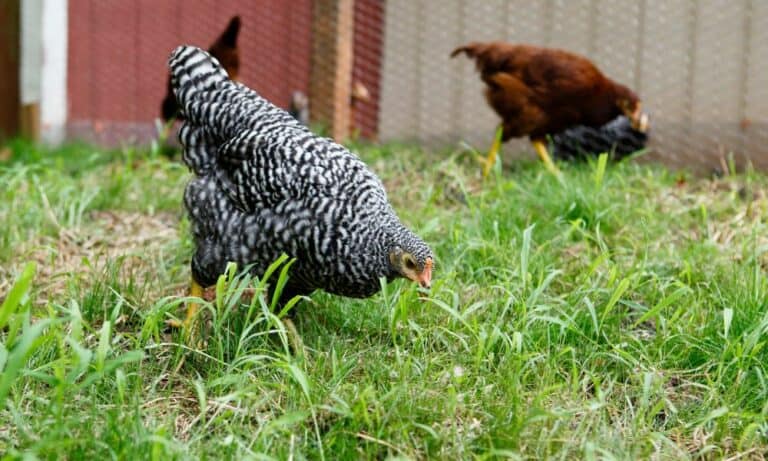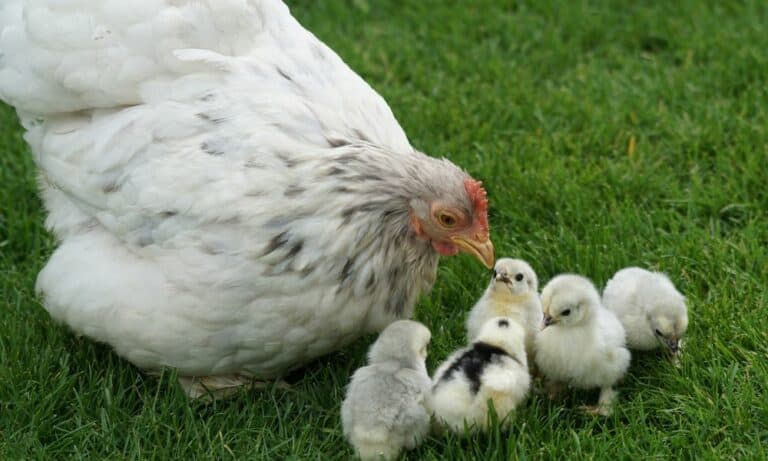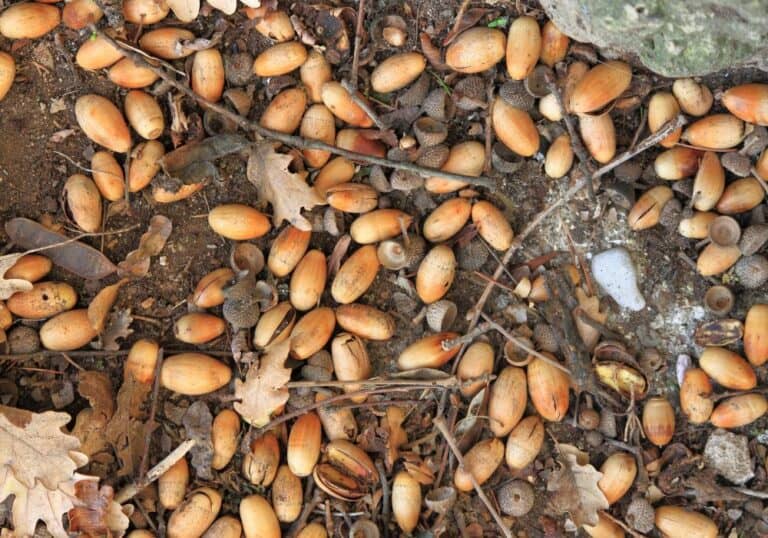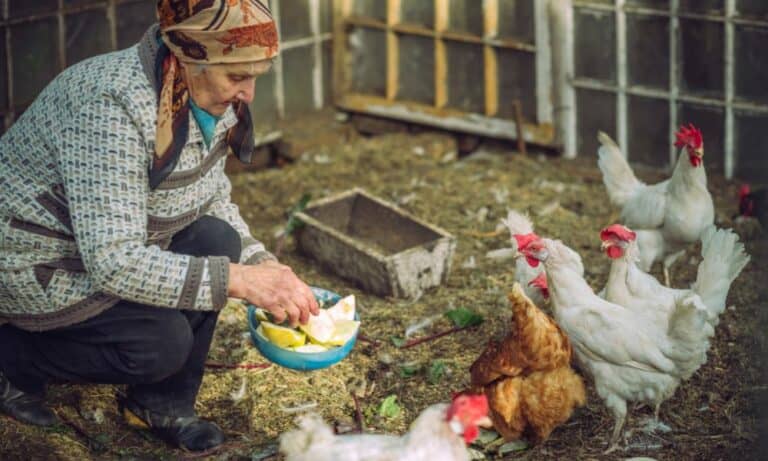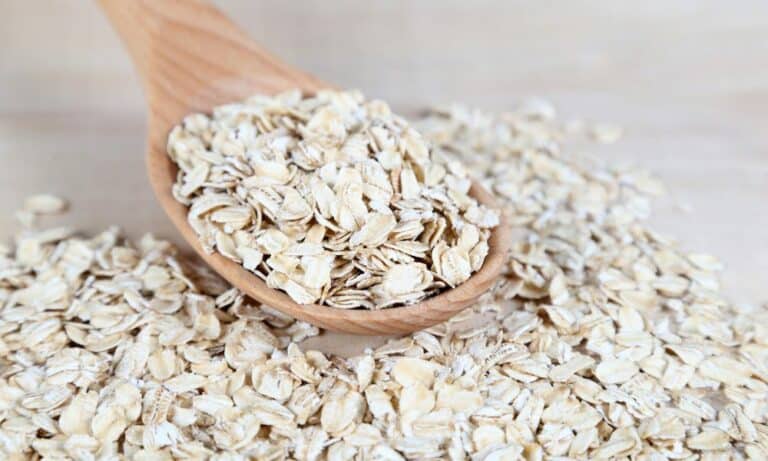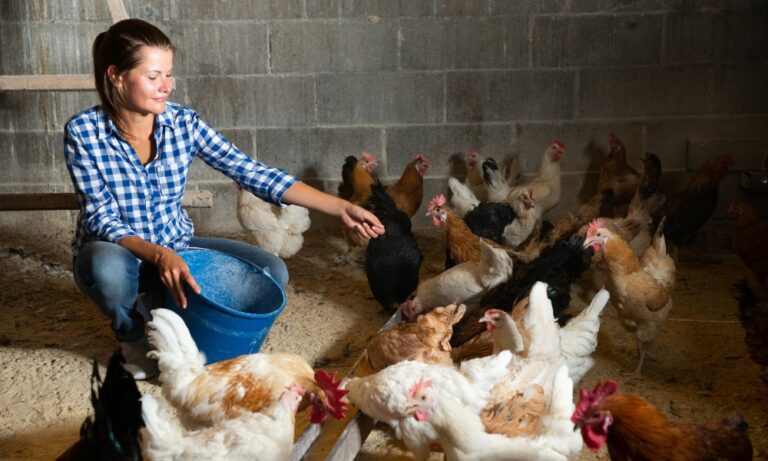To ensure that eggs hatch safely and efficiently, breeders do their best to optimize conditions inside chicken Incubators. What’s the ideal temperature and humidity for chicken eggs in Celsius? The figures differ depending on which farmers or scientists you ask, but it’s generally 37°C to 38°C (98.6°F to 100.4°F) and 45% to 75% humidity. Let’s learn all about chicken Incubator metrics.
How Eggs Are Fertilized Inside a Chicken
First off, not all chicken eggs hatch. A hen can lay eggs with or without a rooster, but if she doesn’t mate before she lays, her eggs are infertile and will never hatch. When she does mate, the rooster’s sperm stays in her glands up to two weeks. Whenever a new egg squeezes past these glands, sperm are released and move up her oviduct, fertilizing the next egg in line.
A single mating session can fertilize multiple eggs, but because of how things work, the first and last egg in every clutch might not get fertilized. Also, remember that a hen waits until she has a full clutch of 8 to 13 eggs before she starts sitting on them. This is called her broody period, and she keeps the eggs warm. They get oxygen and moisture from the atmosphere.
Inside the shell, the embryo gets nutrients from the yolk and the egg white. It develops blood vessels that draw air through the porous shell and supply it to the growing chick. For the egg to absorb the oxygen and nutrients, it needs steady heat. Meanwhile, moisture allows chicks to break out of the shell at hatching time. This is why temperature and humidity both matter.
Chicken Incubator Temperature in Celsius
As we mentioned before, a chicken Incubator should be set at around 37°C to 38°C, which is 96.7°F to 100.4°F. Usually, the chicken Incubator is set at higher for the first 18 days then dropped for the last three or four days. The temperature drop starts when you stop turning the eggs because this is when the chicks start actively hatching. From Day 1 to 18, hens turn their eggs a lot.
They do this every fifteen minutes, but in a chicken Incubator, the turning cycle is between one and four hours. Turning the eggs ensures the yolk doesn’t stick to the shell, which is a crucial step in keeping the chick alive. But around Day 15, the chick starts flipping its body to access the air sac. If you turn eggs after Day 18, the chick can’t breathe and might not hatch.
Setting the right hatching temperature keeps the embryo alive and growing. If it drops below 37°C (96.7°F) or above 38°C (100.4°F), the embryo might freeze, overheat, or starve. Also, in the last few hours before hatching, the chick will pull any remaining yolk from the shell and back into its belly. These stored nutrients feed the chick for the first 48 to 72 hours of its life.
Humidity Inside a chicken Incubator
If a hen is sitting on her eggs, the moisture from her body provides humidity for the eggs. She may also carry some on her feathers when she goes for food and water every day at dawn and dusk. This moisture is crucial during the last three days of hatching because it softens the shell enough for the chick to poke its way out. At this time, the chick needs 75% to 80%.
Humidity is measured as a percentage of the water vapor that’s present in the air. The chick doesn’t break the shell open all at once. It first pokes its beak into the air sac inside the shell. This is around the 19th day when it starts to use its lungs and might even cheep while it’s still inside the shell. Next, it pokes a small hole in the shell so it can access more oxygen for itself.
Finally, it uses its neck muscles to break the shell roughly in half and free itself. If the air isn’t humid enough, the shell may be too brittle and this cracking process will go wrong and kill the chick. But what about dry hatching? This doesn’t mean there’s no moisture at all. It just means you opt for lower levels of humidity like 15% to 30% instead of pushing it over 75%.
Factors to Consider for Dry Hatching
When you’re selecting eggs for incubation, think about the natural system of doing things. The hen lays one egg a day for one to two weeks before she starts brooding. So the earliest egg will stay unattended at least one week before it gets any TLC. Similarly, you should keep your fertile eggs for 7 to 9 days before you put them inside a chicken Incubator to start hatching.
3 to 5 days into incubation, the embryo develops the blood vessels we mentioned earlier. You can tell by candling the egg, which is when you hold it up to a special light so you can check the shell’s developing blood supply. If you’re opting for dry-hatching, carefully inspect the size of the air cell. If it’s large enough to support the chick, you can safely reduce humidity.
Interestingly, the consensus on humidity levels varies. Some sources say 45% while others go as high as 80%. A reasonable pattern is to use 50% to 55% for the first 18 days. Then when you stop turning the eggs, raise it between 60% and 80% for the final three days of hatching. And remember that after the chick hatches, leave it in the chicken Incubator for a few hours to fluff.
The Importance of Fluffing
Hatching is an exhausting experience for a chick and it uses up a lot of energy. So it often needs to rest for long periods between stages. When it finally breaks out of the shell, it’s cold and wet. In nature, the hen will continue to sit on her eggs as they gradually hatch. She keeps them warm during their first few hours of life until their downy feathers dry and get fluffy.
Without her, the chicks can catch a chill and die of hypothermia. This step is also important because as we mentioned, chicks start cheeping while they’re still inside their shells. This noise signals their mother, but it also prompts the chicks in surrounding eggs to break out. It’s a team effort and it can save the lives of other chicks by encouraging the hen to stay on.
Once several chicks hatch, the hen stops brooding so the rest might freeze. It’s why chicks nudge each other to hatch around the same time. That’s one more reason to leave wet chicks and hatching eggs undisturbed. Leave them in the chicken Incubator until they’re all sufficiently safe and warm. Within a day or two, they can see, walk, and eat so you can offer food and water.
The Issue of Fahrenheit and Celsius
Most of the world measures temperature in Degrees Celsius, but America still uses Degrees Fahrenheit. The Fahrenheit system is older. It was invented by Daniel Gabriel Fahrenheit, a Polish-born German scientist. His experiments found that water freezes at 32°F and boils at 212°F. The system became popular in 1724, and the British Royal Society spread it globally.
Degrees Fahrenheit were part of the Imperial Measurement System, which also included feet, inches, yards, miles, ounces, and pounds. But two decades later, Anders Celsius came up with Degrees Celsius. This Swedish astronomer did his own series of experiments and set the freezing point of water at 0°C and its boiling point at 100°C. This happened around 1742.
Essentially, 1°C is roughly 1°F + 32°. Then in 1790, France adopted Degrees Celsius, adding them to their metric measurement system. It used centimeters, meters, kilometers, grams, kilograms, etc. These were easier to work with because you’d multiply by ten or a hundred to quickly convert weight and distance. The UK officially switched to this metric system in 1965.
America and the Metric System
In 1975, Congress tried to make the move from imperial to metric measurements. But it faced opposition from multiple sectors, and that disapproval continues to date. It’s why the USA is one of the only countries in the world that still uses Degrees Fahrenheit, as well as miles, feet, and fluid ounces. It’s also why our clothes and shoes have different sizing styles.
In terms of incubation, it’s quite important to know chicken Incubator temperature and humidity for chicken eggs in Celsius. If we use imported equipment, we have to make the right conversion to ensure our eggs hatch safely. And when we make chicken Incubators for export, we often have to include two sets of measurements, marking them up in both Fahrenheit and Celsius Degrees.
For humidity, Celsius and Fahrenheit aren’t an issue because we’re focused on the amount of water vapor in the air. The only issue is whether this air is measured in gallons, liters, cubic centimeters, or fluid ounces. And in all these cases, the percentage of relative humidity works out to the same figures. Just be sure whether you’re dry-hatching or using higher humidity.
The Right Tools for Humidity and Hatching in Chicken Incubators
A lot of the time, the air inside a chicken Incubator is slightly lower and drier than it is inside the egg. The difference in heat levels is typically 1°C to 1.5°C or 33.8°F to 34.7°F. For humidity, you may need to keep adding water to the chicken Incubator. The heat source evaporates it to raise humidity. If your chicken Incubator doesn’t have them, use a separate thermometer and hydrometer.

